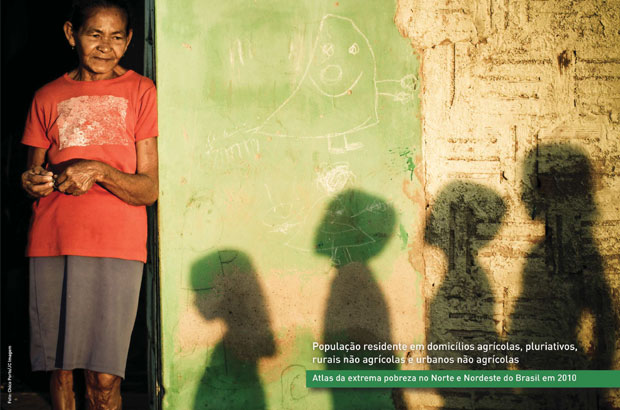IPC-IG, IFAD and Ipea Launch the “Atlas of Extreme Poverty in the North and Northeast of Brazil"

Brasilia - The International Policy Centre for Inclusive Growth (IPC-IG) of the United Nations Development Programme (UNDP) and the International Fund for Agricultural Development (IFAD), in partnership with the Brazilian Institute of Applied Economic Research (IPEA), recently launched the "Atlas of Extreme Poverty in the North and Northeast regions of Brazil in 2010." The Atlas identifies the municipalities with the highest concentration of people living in households with a monthly per capita income of up to 70 Brazilian reais in those regions, with the objective of mapping where there is a greater concentration of extreme poverty
The North and Northeast regions comprise 16 states - seven in the North and nine in the Northeast - and are broadly recognized as the poorest regions in a country characterized by great regional inequalities.
The study adopts the official extreme poverty line used by the Brazilian Federal Government, according to which families living with a monthly household income per capita of up to 70.00 Brazilian reais in 2010 were in an extreme poverty situation.
The Atlas uses microdata from the Brazil's Demographic Census of 2010 and features over 80 maps that locate where the most vulnerable Brazilians live in the North and Northeast regions. For each one of these states there are five maps that reveal the municipal levels of extreme poverty, considering the state as a whole and the following typology of households:
- Agricultural households: any household where at least one person is employed in agriculture, and 67 per cent or more of labour income originates from agricultural activities;
- Pluriactive households: those where at least one member of the household is employed in agriculture, but less than 67 per cent of labour income is derived from agriculture;
- Non-agricultural rural households: those located in officially designated rural areas, but without any household member working in agriculture;
- Non-agricultural urban households: those located in officially designated urban areas, but without any household member working in agriculture.
To download the Atlas in English, please click here